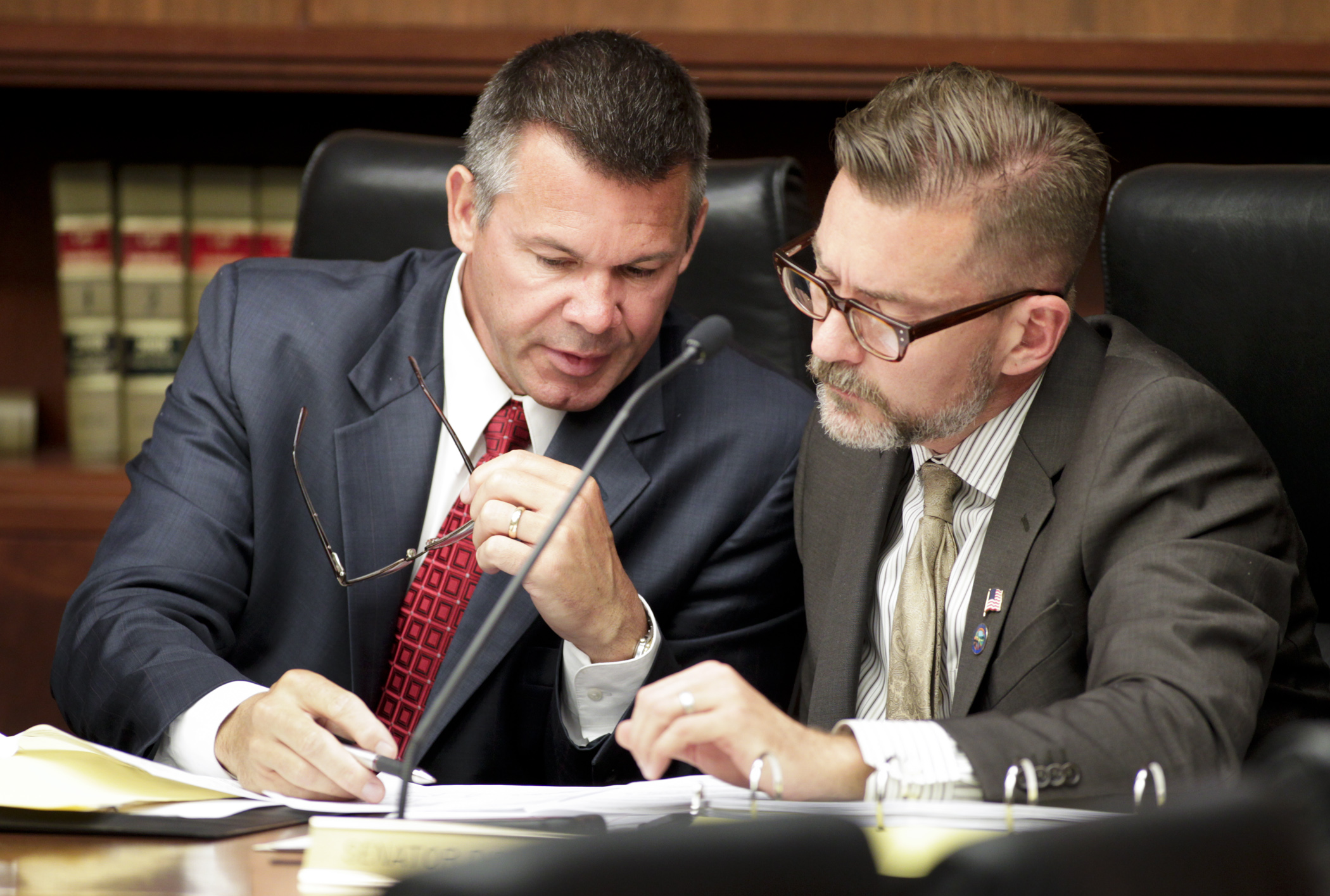Transportation conferees miles apart as negotiations begin

Key legislative leaders on both sides of the aisle have agreed publicly this session that the state faces a transportation funding shortfall billions of dollars in size.
But, as a House and Senate conference committee on HF4*/SF1904, the omnibus transportation policy and finance bill, kicked off its negotiations Wednesday the two sides have broad differences to bridge, offering widely differing roadmaps to paying for that needed investment over the next decade.
Led by conference committee chairs Rep. Tim Kelly (R-Red Wing) and Sen. D. Scott Dibble (DFL-Mpls), the joint panel completed a walkthrough of the House and Senate language and adopted a handful of nearly identical policy measures. Huge disparities remain to be hashed out in the coming days, however, as lawmakers rush toward a May 18 constitutional deadline.
The biggest differences are in two areas: the source of new revenues for transportation and dollars for metro-area transit.
The House version of the bill would rely on existing revenues to increase spending on roads and bridges by $7 billion over a decade. It proposes to utilize existing vehicle-related sales taxes on things like auto parts, rentals and leases by redirecting those revenues from the state’s General Fund to boost funding for roads, bridges and rural transit by roughly $450 million in the next biennium.
That’s in sharp contrast to the Senate’s approach that would impose a new 6.5 percent motor fuels gross receipts tax on top of the state’s existing gas tax and increase in the vehicle registration tax that would generate more than $800 million in new funding during the coming biennium for road and bridge work. It would also increase a sales tax to fund metro mass transit projects.
In all, the Senate plan projects to raise more than $11 billion in new transportation funding over the next ten years.
Transit differences
House and Senate conferees will likely attempt to hammer out vastly different approaches to funding and governing transit.
The House proposes to phase out General Fund appropriations to the Metropolitan Council for transit operations and maintenance, eliminate a half-million dollar annual base appropriation from the General Fund to the Department of Transportation for commuter and passenger rail, require legislative approval of planning for future transit lines and force the Counties Transit Improvement Board to pay 100 percent of the operating subsidy on metropolitan transitways it has helped fund, among other changes.
Conversely, the Senate would impose a new three-quarter cent metro area transit-dedicated sales tax to raise more than $630 million in 2016-17 to continue building out Twin Cities’ regional mass transit system.
Related Articles
Search Session Daily
Advanced Search OptionsPriority Dailies
Ways and Means Committee OKs proposed $512 million supplemental budget on party-line vote
By Mike Cook Meeting more needs or fiscal irresponsibility is one way to sum up the differences among the two parties on a supplemental spending package a year after a $72 billion state budg...
Meeting more needs or fiscal irresponsibility is one way to sum up the differences among the two parties on a supplemental spending package a year after a $72 billion state budg...
Minnesota’s projected budget surplus balloons to $3.7 billion, but fiscal pressure still looms
By Rob Hubbard Just as Minnesota has experienced a warmer winter than usual, so has the state’s budget outlook warmed over the past few months.
On Thursday, Minnesota Management and Budget...
Just as Minnesota has experienced a warmer winter than usual, so has the state’s budget outlook warmed over the past few months.
On Thursday, Minnesota Management and Budget...